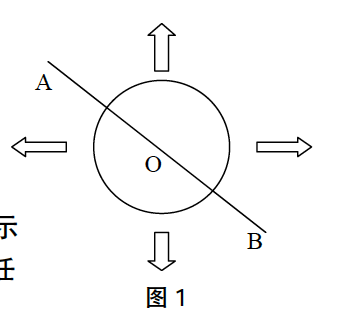坡印亭定理
目录
坡印亭定理
在电动力学中,坡印亭定理是英国物理学家约翰·亨利·坡印廷提出的电磁场能量守恒的陈述。 它指出,在给定的体积中,存储的能量以体积内电荷所做的功减去能量离开体积的速率给出的速率变化。 它只在非色散介质中严格成立,但可以推广到色散情况。该定理类似于经典力学中的功能定理,在数学上类似于连续性方程。
定义
坡印亭定理指出,空间区域每单位体积的能量传输率等于该区域电荷分布的功率加上离开该区域的能量通量。
数学上:
− ∂ u ∂ t = ∇ ⋅ S + J ⋅ E {displaystyle -{frac {partial u}{partial t}}=nabla cdot mathbf {S} + mathbf {J} cdot mathbf {E} }
在哪里:
- − ∂ u ∂ t {displaystyle -{frac {partial u}{partial t}}} 是体积内能量密度的变化率。
- ∇•S 是流出体积的能量,由坡印亭向量 S 的散度给出。
- J•E 是场对体积中的电荷做功的速率(J 是对应于电荷运动的电流密度,E 是电场,• 是点积)。</li >
推导
对于电磁场中的单个电荷,场对电荷所做的功的速率由洛伦兹力定律给出:d W d t = q v ⋅ E {displaystyle {frac {dW}{dt} }=qmathbf {v} cdot mathbf {E} }
将其扩展到电荷的连续分布,随着电流密度 J 移动,给出: d W d t = ∫ V J ⋅ E d 3 x {displaystyle {frac {dW}{dt}}=int _{V }mathbf {J} cdot mathbf {E} ~mathrm {d} {3}x}
根据安培环路定律:J = ∇ × H − ∂ D ∂ t {displaystyle mathbf {J} =nabla times mathbf {H} -{frac {partial mathbf {D} }{partial t}}} (请注意,这里使用了磁场和电场的 H 和 D 形式。B 和 E 形式也可以用于等效推导。)
将其代入工作率的表达式中得到: ∫ V J ⋅ E d 3 x = ∫ V [ E ⋅ ( ∇ × H ) − E ⋅ ∂ D ∂ t ] d 3 x {displaystyle int _{V }mathbf {J} cdot mathbf {E} ~mathrm {d} {3}x=int _{V}left[mathbf {E} cdot ( nabla times mathbf {H} )-mathbf {E} cdot {frac {partial mathbf {D} }{partial t}}right]~ mathrm {d} {3}x}

使用向量恒等式 ∇ ⋅ ( E × H ) = ( ∇ × E ) ⋅ H − E ⋅ ( ∇ × H ) {displaystyle nabla cdot (mathbf {E} times mathbf {H} )= (nabla {times }mathbf {E} )cdot mathbf {H} ,-,mathbf {E} cdot ( nabla {times }mathbf {H} )} : ∫ V J ⋅ E d 3 x = − ∫ V [ ∇ ⋅ ( E × H ) − H ⋅ ( ∇ × E ) + E ⋅ ∂ D ∂ t ] d 3 x {displaystyle int _{V}mathbf {J} cdot mathbf {E} ~mathrm {d} {3}x=-int _{V} left[nabla cdot (mathbf {E} times mathbf {H} )-mathbf {H} cdot (nabla times mathbf {E} )+mathbf {E} cdot {frac {部分